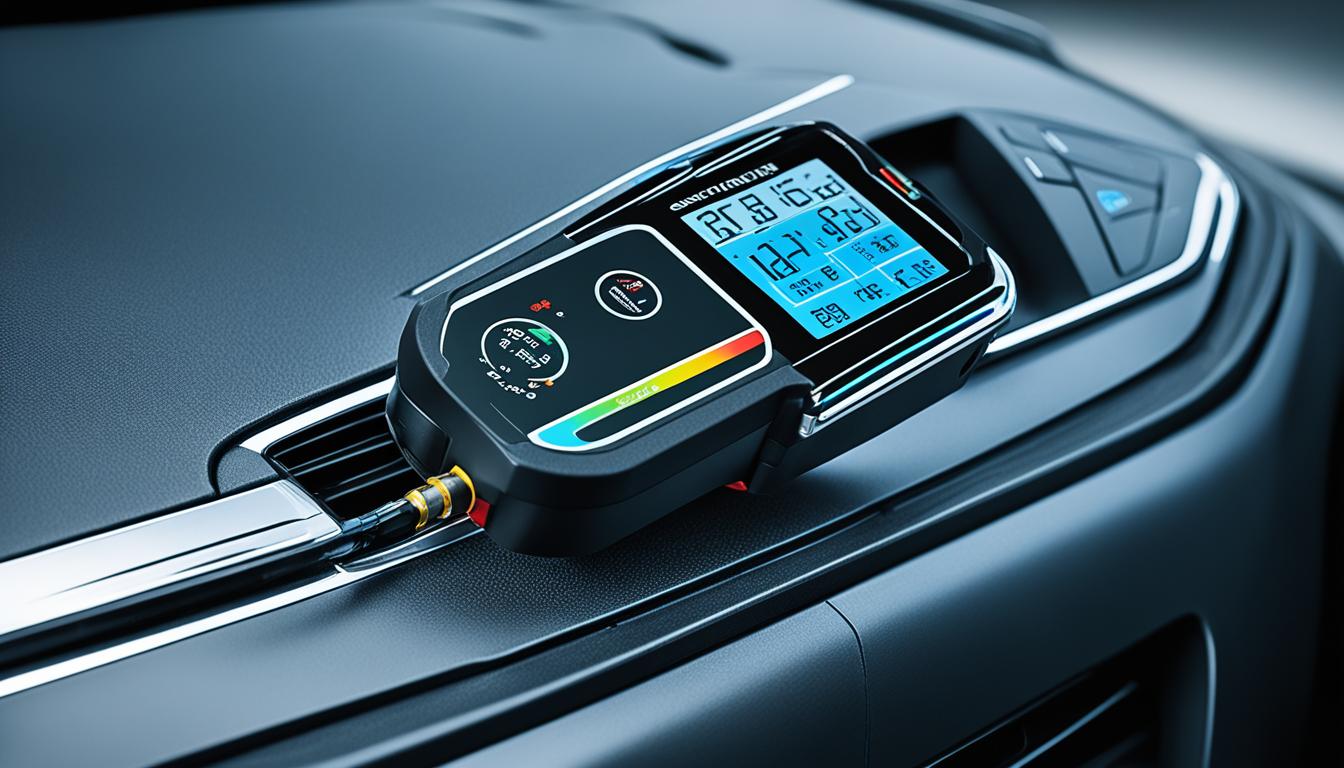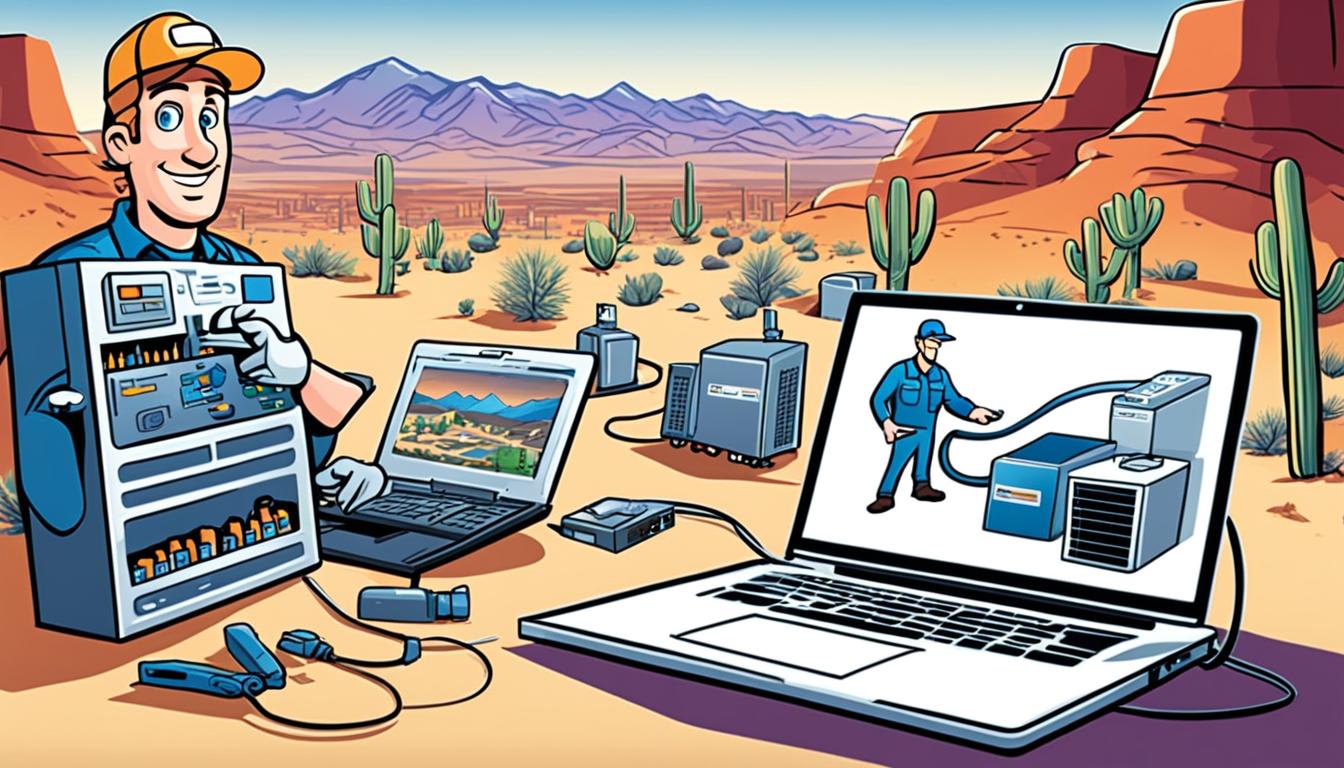Imagine driving on a scorching summer day, eagerly turning on your car’s air conditioner to escape the heat, only to be met with warm air and disappointment. It’s an all-too-familiar frustration that many of us have experienced.
As an AC repair contractor or a car owner, you know the importance of maintaining a properly functioning automotive air conditioning system. Leaks in these systems can not only lead to a drop in cooling performance but also cause potential damage to critical components.
But here’s the good news: AC leak detectors, the very tools used by HVAC professionals, can also be effectively employed in automotive air conditioning systems.
By utilizing AC leak detectors specifically designed for automotive systems, you can accurately identify and repair refrigerant leaks in a cost-effective and professional manner. These tools enable you to locate leaks in various components of the automotive air conditioning system, including connections, lines, compressors, condensers, evaporators, filter dryers, pressure switches, and service connections.
So, let’s dive deeper into the world of AC leak detection in automotive systems and explore effective methods, tips, and common challenges you may encounter along the way.
Key Takeaways:
- AC leak detectors are not only useful for HVAC systems but also for automotive air conditioning systems.
- Refrigerant leaks in automotive AC systems can impact cooling performance and potentially damage components.
- Tools like contrast agents, UV lamps, electronic leak detectors, and forming gas can help detect leaks in automotive AC systems.
- Visual inspection, UV dye, electronic leak detectors, soap solution, and pressure testing are effective methods for leak detection.
- Using AC leak detectors requires proper technique, consideration of potential challenges, and knowledge of different car AC system specifications.
Methods for detecting refrigerant leaks in automotive AC systems
When it comes to detecting refrigerant leaks in automotive AC systems, there are several effective methods that can help you pinpoint the exact location of the leak. By utilizing these methods, you can save time and money by quickly identifying and repairing leaks in the system.
1. Visual inspection
The first step in detecting leaks is performing a thorough visual inspection of the AC system. Check the connections, hoses, metal lines, condenser, evaporator drain tube, and compressor for any signs of oil, dye, or refrigerant residue. Look for any obvious signs of leaks, such as oily spots or stains.
2. UV dye
Another common method is using UV dye to detect leaks. This involves injecting a dye into the AC system that circulates with the refrigerant. After a few days, use a UV light to inspect the system for any fluorescent areas, which indicate the presence of a leak. UV dye is particularly useful for detecting small or hidden leaks.
3. Electronic leak detectors
Electronic leak detectors, also known as “sniffers,” are highly efficient tools for detecting refrigerant leaks. These devices use a probe to detect the refrigerant gas that is leaking out of the system. By moving the sniffer probe around the AC system, you can quickly pinpoint the exact location of the leak. Electronic leak detectors are particularly useful for detecting fast or hard-to-find leaks.
4. Soap solution
Some technicians use a soap solution to detect leaks. By applying the solution to the AC system components, such as connections and hoses, you can look for bubbles that form, indicating the presence of a leak. This method is effective for detecting larger leaks that produce bubbles visible to the naked eye.
5. Pressure testing
Pressure testing involves pressurizing the AC system with nitrogen gas and monitoring for a rapid pressure drop, which indicates a refrigerant leak. This method is particularly useful for detecting fast leaks that may not be easily detected through visual inspection or other methods. Pressure testing should be done with caution to avoid over-pressurizing the system.
6. Combination of methods
In some cases, it may be necessary to use a combination of methods to detect leaks effectively. By utilizing different techniques, you can increase the chances of identifying all leaks present in the automotive AC system.
Remember, it is essential to follow the specific instructions provided for each method and use the appropriate leak detection equipment, such as an automotive HVAC leak detector or an automotive air conditioning leak tester, to ensure accurate results.
| Method | Advantages |
|---|---|
| Visual inspection | Can identify obvious leaks and signs of damage |
| UV dye | Effective for detecting small or hidden leaks |
| Electronic leak detectors | Quickly pinpoint the exact location of the leak |
| Soap solution | Useful for detecting larger leaks visible to the naked eye |
| Pressure testing | Effective for detecting fast leaks |
Tips for using AC leak detectors in automotive systems
When it comes to using AC leak detectors in automotive systems, following certain tips can ensure optimal results and accurate leak detection. Whether you are an AC repair contractor or a car owner, these tips will help you make the most of your automotive AC diagnostics tools and leak detection kit.
1. Start with a visual inspection: Before using any specialized equipment, visually inspect the automotive AC system for any visible signs of leaks. Look for oil, dye, or refrigerant residue around connections, hoses, metal lines, condensers, evaporators, and other components. Identifying any obvious leaks will provide a starting point for further investigation.
2. Be cautious with UV dye: UV dye can be a useful tool for locating refrigerant leaks in automotive AC systems. However, it’s essential to ensure that there is no existing dye in the system, as this can interfere with the detection process. Follow the manufacturer’s instructions carefully when injecting UV dye and use a UV light to inspect the system for any fluorescent areas that indicate the location of the leak.
3. Proper use of electronic leak detectors: Electronic leak detectors, also known as “sniffers,” are effective tools for detecting refrigerant gas leaks in automotive AC systems. When using these detectors, it’s crucial to use the tool properly and be aware of potential false alarms. For example, when checking for a leak at the evaporator drain, take precautions to prevent water from entering the detector’s wand, as this can damage the tool and lead to inaccurate readings.
4. Soap solution for fast leaks: Soap solution can be an effective method for detecting fast leaks in automotive AC systems. Apply the soap solution to the components and look for bubbles that form, indicating the location of the leak. However, keep in mind that this method requires access to the components and a significant enough leak to produce visible bubbles.
5. Caution when pressure testing: Pressure testing can be a reliable method for detecting refrigerant leaks in automotive AC systems. However, it should be done with caution to prevent damage to the system. Make sure to follow proper procedures and use the recommended pressure testing equipment. Remember to monitor the pressure drop carefully, as a rapid drop indicates a refrigerant leak.
6. Consider service port sizes: It’s important to be aware of the different sizes of service ports used in R134A and R1234YF car AC systems. Using the wrong size service port adapter can lead to cross-contamination and inaccurate readings. Always use the appropriate adapter for the system you are working on to ensure accurate detection of refrigerant leaks.
By following these tips, you can maximize the effectiveness of your automotive AC diagnostics tools and leak detection kit. Remember, accurate and efficient leak detection is essential for maintaining optimal cooling performance and avoiding potential damage to the AC system components.
Common challenges in detecting refrigerant leaks in automotive AC systems
Detecting refrigerant leaks in automotive AC systems can sometimes pose challenges. One common challenge is the accumulation of dye on garter springs, making it difficult to see the dye with a UV light. This can hinder the detection of leaks and require technicians to explore alternative methods.
Another challenge arises when dealing with tiny pinhole leaks in condensers or evaporators. These leaks may not be easily detected with electronic leak detectors, which are designed to identify larger leaks. In such cases, technicians may need to remove the components and submerge them in water under pressure to observe the formation of tiny air bubbles indicating a leak.
Access to specific components, like the evaporator, can also present challenges in leak detection. Certain methods, such as using a soap solution, may be limited in effectiveness due to restricted access. Technicians must be aware of these limitations and adapt their approach accordingly.
Furthermore, the loss of refrigerant without any visible oil leaks or dye presence can be a puzzling situation in leak detection. This requires careful diagnosis and a comprehensive understanding of the system. Technicians should use a combination of methods, tools, and their expertise to effectively detect and repair refrigerant leaks in automotive AC systems.





0 Comments